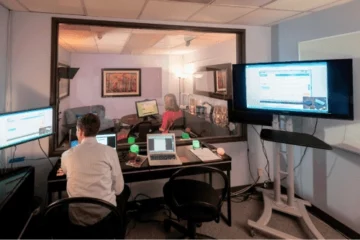Amongst free options, Inkscape and Vecteezy are very popular applications, and each characteristic a lot of sturdy tools to make your greatest vectors come to life. Out of all of the software program available, Adobe Illustrator is the most popular, and its recognition has led it to become the business commonplace. Vector pictures also have the tendency to face out with their enticing use of color, texture, depth, and layers. This provides businesses one extra reason to use them in their promotional content. One path is to study highly effective and sophisticated software like Adobe Illustrator. This provides you complete artistic control, however comes with a steep learning curve and a month-to-month subscription.
Advantages Of Vector Graphics
Cloudinary provides highly effective instruments to streamline this process, making certain your photographs load quickly without sacrificing quality. For abstract graphics, logos, designs requiring scaling, go for vectors. Their computationally derived coordinates will reshape infinitely without compromising integrity. These shapes could be layered and coloured for example complicated scenes. They remain totally editable and seamlessly scalable since the underlying math remains fixed when enlarging or modifying the vector picture.
This grid-like construction makes them perfect for replicating sensible pictures. On the opposite hand, vector photographs are manufactured from equations translated into code and they also take up far less house. Since businesses must store a lot of recordsdata on their gadgets, saving on space is simply one more reason to opt for vector images over rasters.

Raster File Varieties
Though it could present some challenges, it’s possible to transform vector information to raster or raster recordsdata to vector when wanted. Many digital cameras routinely shoot and save pictures as raster information — and the pictures you see on-line are often rasters, too. Raster recordsdata are also commonly used for modifying pictures, pictures, and graphics. We offer SVG optimization for vector graphics, lowering file measurement while sustaining the image’s scalability and high quality. This is crucial for net use, the place every kilobyte saved contributes to sooner page load times and a smoother consumer experience. It offers an attractive and adaptable technique of visible representation.
- It is impractical to try and convert a real-world photo into a vector file without losing what makes it look realistic.
- When extending raster pictures, however, there is a must deal with maintaining picture high quality.
- Their infinite scalability and simplified shapes make them excellent for designs like logos that have to be adaptable and easily edited for quite so much of contexts.
- Vector information are much more lightweight than raster information, containing only the mathematical formulas that determine the design.
- A vector image is an infinitely scalable digital graphic made out of mathematically calculated paths.
Vector graphics, on the other hand, are created utilizing mathematical equations to outline shapes, traces, and hues. Unlike raster images, vector pictures aren’t made up of pixels, allowing them to be resized infinitely with out losing high quality. Due to their scalability and clean lines, vector graphics are broadly used for logos, illustrations, and typography.
However, you presumably can compress raster recordsdata for storage and net optimization to make sharing quicker and simpler. Raster recordsdata are images constructed from pixels — tiny color squares that, in great quantity, can form highly detailed images corresponding to photographs. The more pixels an image has, the upper quality it is going to be, and vice versa. The number of pixels in an image depends on the file type (for example, JPEG, GIF, or PNG).
Plus, Cloudinary’s transformation features permit you to adapt your images on the fly. Cloudinary processes these modifications in real-time, serving the proper model of your picture for each state of affairs. This flexibility is invaluable, especially when dealing with the various requirements of contemporary net and cellular applications. Vector files are rather more light-weight than raster files, containing solely the mathematical formulation that determine the design.

Instead of relying on pixels, they use paths defined by a start and finish point, along with different factors, curves, and angles. You can scale it up or down to nearly any dimension with out losing quality, which is one thing raster pictures can’t boast. This scalability makes vector graphics a go-to for logos, icons, and any other design that should stay crisp across various mediums. Understanding the nuanced differences between raster and vector photographs is pivotal for developers aiming to grasp media optimization. Raster graphics, famend for his or her pixel-perfect representations, are best for rich, detailed photographs. In distinction, vector photographs shine with their scalable, crisp traces, perfect for logos and illustrations that demand precision throughout varied sizes.
Finest Picture Converters Online
Vectors are additionally perfect for when you want to retailer a lot of information with out compromising on your difference between raster graphics and vector graphics cupboard space. The major distinction between vector and raster graphics is that raster graphics are composed of pixels, whereas vector graphics are composed of paths. A raster graphic, such as a gif or jpeg, is an array of pixels of varied colours, which together form an image.

If you’re drawing something with a restricted number of colors, select vector photographs. You also can create a project that makes use of each pictures and logos, or both kinds of graphics. Instead of relying on tens of millions of tiny of pixels per inch, vector graphics use mathematical formulation to define shapes, strains, and curves. Think About them like digital blueprints the place every element is precisely outlined.
Raster Vs Vector Information: Regularly Requested Questions
Pixels compose raster pictures, whereas mathematical shapes and routes compose vector pictures. Raster photographs take extra onerous disk space than vector format images, even when they seem to look the identical. That is as a result of raster information embrace details about every pixel in the graphic. Compression methods can mitigate this problem, although if area is a significant concern these graphics might current you with a problem.
Enlarging a raster picture means stretching the pixels, which may lead to a noticeable loss in high quality, manifesting as blur or pixelation. This characteristic calls for careful planning regarding the supposed use and measurement of the image from the outset. Additionally, raster information can get quite giant, especially as the dimensions and shade depth enhance, which can be a problem for storage and efficiency. Raster graphics are a fundamental and adaptable media that serves as the inspiration https://deveducation.com/ for a lot of of our visual experiences.
Raster then went mainstream with bitmap computer displays which reconstruct frames pixel-by-pixel. This scanning technique proved completely fitted to pictures as both cameras and screens share grid-based image sensor/pixel buildings. In computer graphics, a bitmap is a mapping from some domain (for example, a variety of integers) to bits, that’s, values which are zero or one. The more common term pixmap refers to a map of pixels, where every one could store greater than two colours, thus using a couple of bit per pixel.
